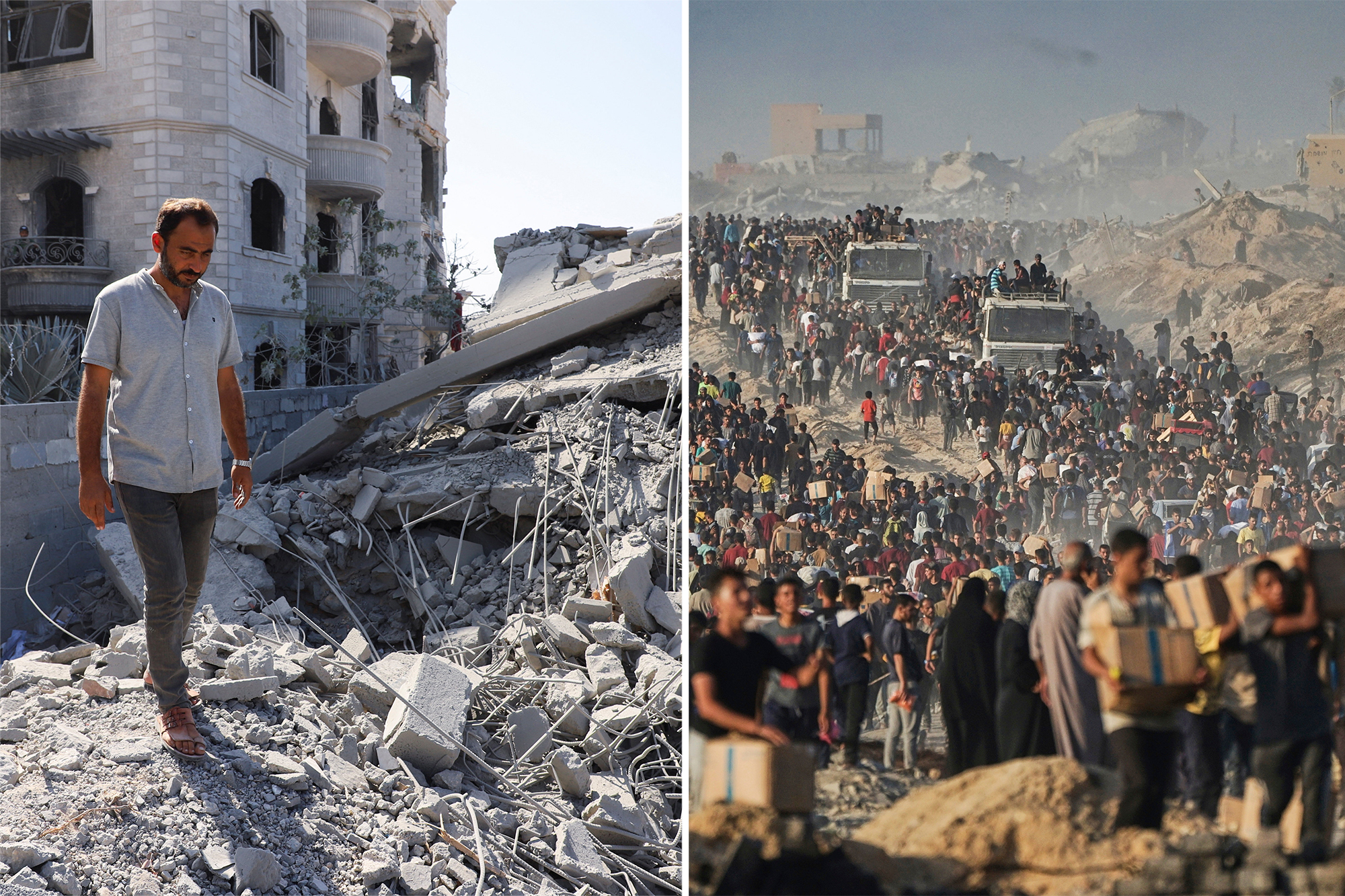World
Gaza Faces Decades-Long Challenge to Clear Dangerous Mines

The Gaza Strip is grappling with a severe crisis as hidden unexploded devices, described as a “horrific, unmapped minefield,” have resulted in the deaths of over 53 people. Experts warn that the comprehensive clearance of these explosives could take between 20 to 30 years.
According to Nick Orr, an explosive ordnance disposal expert with the humanitarian organization Humanity & Inclusion, the situation mirrors the challenges faced by British cities after World War II. Orr emphasized the daunting task ahead: “If you’re looking at a full clearance, it’s never happening. We will find it for generations to come.”
The ongoing conflict has complicated efforts to locate and remove these explosives. Orr noted that it may take at least 30 years to identify and clear all the landmines and bombs, particularly given the extensive rubble and potential hidden explosives in the area. Currently, Orr is part of a seven-member team conducting surveys near essential structures, including hospitals and bakeries, to assess the presence of dangerous materials.
The team is seeking permission from Israel to safely remove and destroy these explosives, with plans to incinerate the bombs to prevent their potential reuse by Hamas. As of now, the United Nations reports that at least 53 individuals have succumbed to injuries from these hidden threats, with hundreds more affected.
Aid organizations, including Humanity & Inclusion, believe that the UN’s casualty figures significantly underrepresent the actual numbers on the ground. The UN Mine Action Service has called for a widespread public awareness campaign in Gaza to educate civilians about the dangers of unexploded devices as they return to areas affected by conflict.
Clearing mines in densely populated regions is a complex and time-consuming process. Historical precedents illustrate the challenges faced by nations recovering from conflicts. For instance, it took 22 years for Mozambique to be officially declared mine-free in 2015, following its War of Independence and subsequent civil war. Similarly, even decades after the Fall of Saigon, Vietnam still contends with approximately 18% of its territory contaminated by unexploded ordnance, resulting in an estimated 40,000 deaths and 60,000 injuries since 1975, according to the Vietnam National Mine Action Center.
The humanitarian implications of Gaza’s unexploded devices are profound, as communities face ongoing threats in their efforts to rebuild and recover from conflict.
-

 Science5 days ago
Science5 days agoInventor Achieves Breakthrough with 2 Billion FPS Laser Video
-

 Top Stories1 week ago
Top Stories1 week agoCharlie Sheen’s New Romance: ‘Glowing’ with Younger Partner
-

 Entertainment1 week ago
Entertainment1 week agoDua Lipa Aces GCSE Spanish, Sparks Super Bowl Buzz with Fans
-

 Business1 week ago
Business1 week agoTyler Technologies Set to Reveal Q3 Earnings on October 22
-

 World1 week ago
World1 week agoR&B Icon D’Angelo Dies at 51, Leaving Lasting Legacy
-

 Science1 week ago
Science1 week agoNorth Carolina’s Biotech Boom: Billions Invested in Manufacturing
-

 Health1 week ago
Health1 week agoCurium Group, PeptiDream, and PDRadiopharma Launch Key Cancer Trial
-

 Entertainment1 week ago
Entertainment1 week agoMother Fights to Reunite with Children After Kidnapping in New Drama
-

 Health1 week ago
Health1 week agoNorth Carolina’s Biotech Boom: Billions in New Investments
-

 Health1 week ago
Health1 week agoCommunity Unites for 7th Annual Into the Light Walk for Mental Health
-

 Entertainment1 week ago
Entertainment1 week agoRed Sox’s Bregman to Become Free Agent; Tigers Commit to Skubal
-

 Top Stories1 week ago
Top Stories1 week agoDisney+ Launches Chilling Classic ‘Something Wicked’ Just in Time for October









